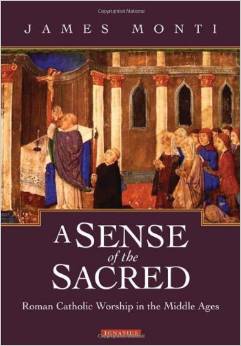
A Sense Of The Sacred
R. Kevin Seasoltz (Continuum: Jan 2005), 394 pages.There have been many histories of Christian art and architecture, and many that have paid attention to the various cultural, social, and economic contexts in which the architecture and art appeared. Most of these accounts have been written by art historians. Kevin Seasoltz writes as a theologian, whose aim is to relate theological and liturgical developments throughout the course of Christian history to developments in sacred architecture and art. Believing that sacred buildings and artifacts have often been more constitutive of theological developments than constitutive of them, Seasoltz wants to help people discover architecture and art as theological loci — places of revelation. Following a chapter on culture as the context for theology, liturgy, and art, Seasoltz surveys developments from the early church up through the conventional artistic styles and periods. He pays particular attention to the conflicts that emerged between religion and art since the Enlightenment and to the significant advances made since the middle of the twentieth century to reconciling a wide range of competent architects, artists, and craft persons to the ministry of the Protestant, Anglican, and Catholic churches. Comprehensive, illuminating, ecumenical.
Table of Contents
-
- 1 Culture : the context for theology, liturgy, and sacred architecture and art 1
- 2 The response of the churches to cultural shifts 35
- 3 Sacred architecture and art in the Bible and the early church 66
- 4 Post-Constantinian period 94
- 5 Romanesque and Gothic architecture and art 118
- 6 Renaissance, baroque, and reformation periods 148
- 7 Seventeenth, eighteenth, and nineteenth centuries 180
- 8 Architectural and liturgical reforms in the twentieth century 221
- 9 Developments in liturgy and sacred architecture and art following World War II 252
- 10 Twentieth-century monastic architecture 289
- 11 Sacred art from 1900 to the present 315